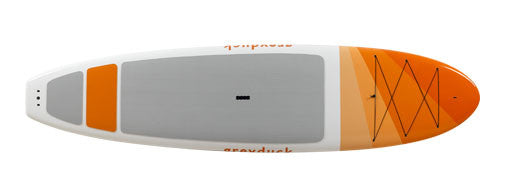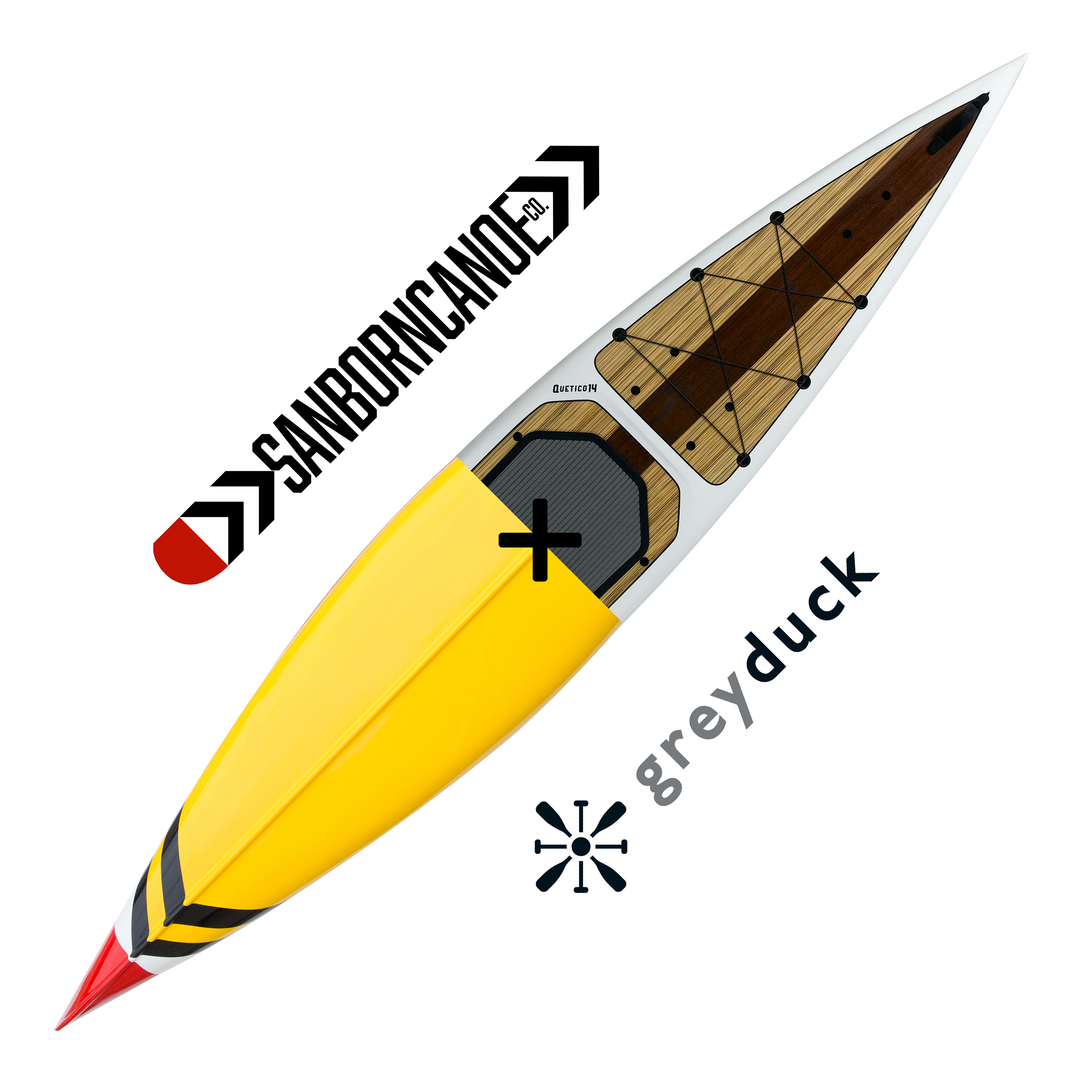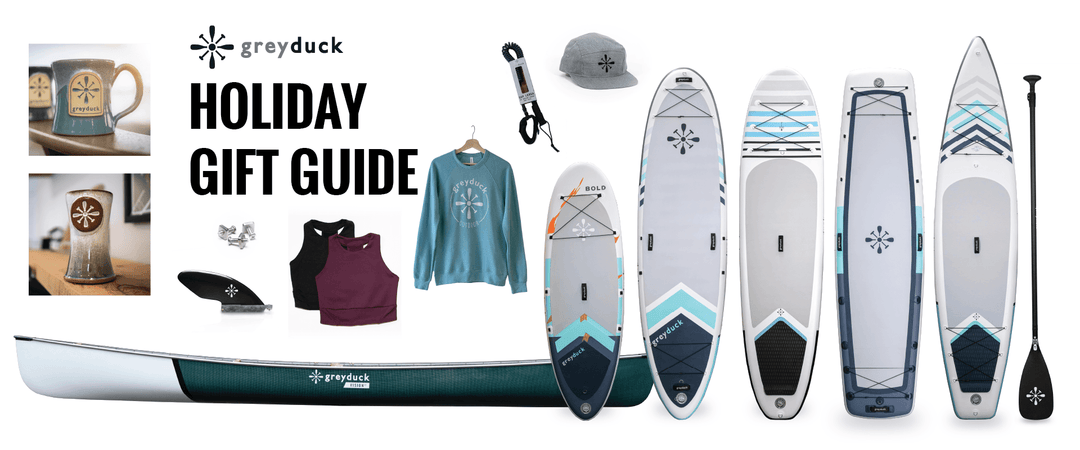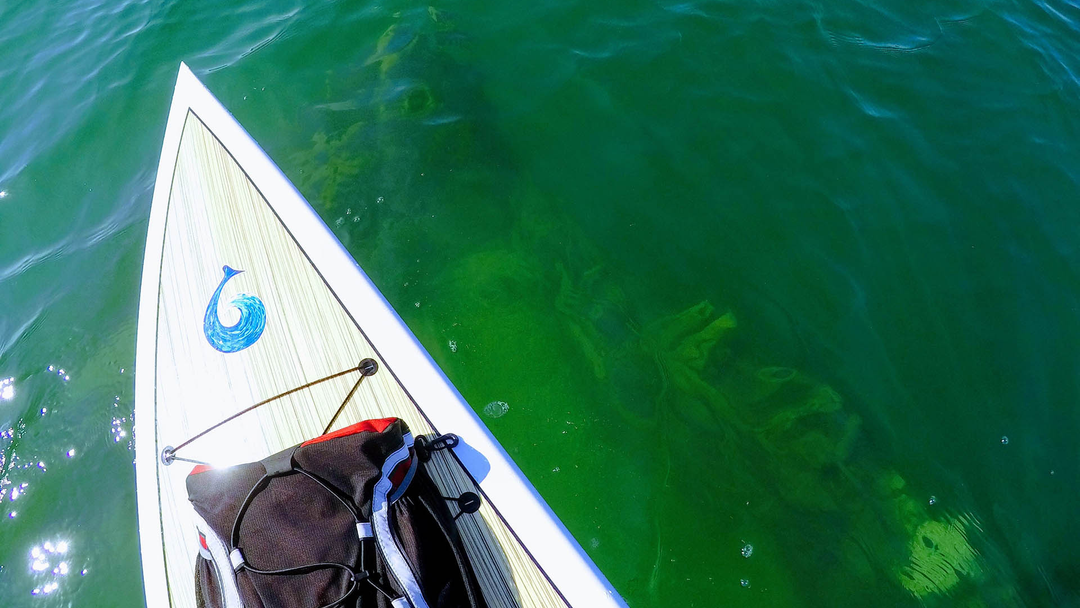Board Construction Materials: A world of tradeoffs

There are a lot of different options on materials to use when building a SUP. We are going to review a list of some of the options, along with the pros and cons of each. Please note that this list isn't exhaustive, but rather a general guide of the most common construction types.
Roto-molded or Blow-molded Polyethylene:
Boards that are built out of polyethylene are tough. Just like many of the kayaks that are built of the same material, they can take a beating from rocks, docks, and just about anything else you can throw at it. It is also an inexpensive construction method, resulting in a price point that is reasonable vs. alternatives. Prices for plastic molded boards are typically in the $400-$500 range, depending on size and features.
The downside is that these boards are heavy (like 50-60lbs heavy). About twice as heavy as a higher end board. This translates into more difficulty moving the board around when it is out of the water (sometimes a two person job), and a very sluggish paddling experience on the water. These boards are typically purchased just based on price, as anyone who has paddled them know that almost any other construction provides a better on water experience.
Bottom Line: These are great boards if durability is your main criteria. Greyduck doesn't not sell any boards with this type of construction.
Soft Top:
Soft tops are a relatively inexpensive and lightweight option for people who want a more traditional SUP experience both in and out of the water, but in a less expensive construction. Most soft tops will weigh about 30lbs - half the weight of other inexpensive options. Soft tops typically have a traditional EPS (expanded polystyrene) foam core. Over the core a soft top is typically wrapped in XPE (cross linked polyethylene) or EVA (Ethylene-vinyl acetate) foam on the top and rails of the board, with a HDPE (high-density polyethylene) bottom. Some soft tops may have fiberglass between the EPS core and the outer foam covering (these boards would typically be on the higher end of the cost spectrum due to this added layer of construction). Costs for soft top boards typically run between $400-$900, depending on the board size and materials used.
The downside to soft tops are that they are don't typically have the life span of other types of boards, as foam can break down over time (especially when over exposed to sunlight), and aren't as easily repaired when damage occurs. With that said, they tend to be a good options for someone who is price conscious but wants a lightweight board that is easy to transport and performs fairly well in a variety of conditions.

Bottom Line: A good option if price and weight is your main criteria.
Greyduck board of soft top construction is the SOL.
Epoxy:
Epoxy construction is a general term to represent a combination of materials (such as fiberglass, carbon fiber, wood veneers, etc) bonded together using epoxy resin. This style of board is the most common on the market and is what most people see when they think of a paddle board.
Epoxy construction has many benefits. The board shape can be more complex, the board weight is as light as it can be, and the finished product can take on just about any look the designer wants to carry out. Epoxy construction is infinitely repairable, in that the epoxy resin and other materials can be used to fix any damaged area.
The downside to epoxy is that is typically the most expensive construction method and is more easily damaged upon impact with sharp or hard objects (rocks, docks, etc).
Epoxy boards can have a huge range of costs - generally anywhere from $600-$3,000. Why such a large range? Fiberglass, Carbon Fiber, Wood veneers, etc all have different raw material costs, and when combined in different ways and in different amounts can have a dramatic difference in the final board cost. Not all epoxy boards are created equal. A board just using fiberglass and epoxy resin should be less expensive than a board that also has carbon fiber or wood veneer. How these materials are used together, or 'sandwiched', are an important part of the final product.

Bottom line: The best option if the look and board performance is your main criteria.
Greyduck boards of epoxy construction are the Daybreak, All Day, Journey, and Quetico.
Polymer:
Our HIPtech (High-Impact Polymer technology) construction is a combination of epoxy, fiberglass and polymer that has many of the advantages of epoxy construction, but with increased durability. There is an elasticity component to this construction that allows the board to take on greater impact before cracking or breaking. There is a slight weight addition to boards constructed this way - typically adding approximately 2 lbs over epoxy only construction.

Bottom line: A good option if your looking for both performance and durability.
Greyduck boards offered in HIPtech construction are the Daybreak, All Day, and Quetico.
Inflatable:
Inflatable boards are perfect for anyone who doesn't have the space to store a hard board, or wants to be able to more easily get their board to where they want to paddle. They easily can fit into a car trunk, or a storage compartment on your boat, and can be checked as luggage when traveling by air.
Additionally, inflatable boards tend to be very durable and hold up well in harsh conditions.
The downside to inflatables is that the don't have quite the same performance as a hard board (although high end inflatables are getting close), and you have the time and energy used in unpacking, pumping, deflating, and repacking after use.
Quality varies considerably between brands. As a general rule, expect a high quality inflatable to be as much as a high quality epoxy board. Additionally, there are large differences in the quality of the storage bag and pumps between brands. Cheap boards will come with cheap bags and pumps, and vice versa for higher priced options. There is a very clear difference between a high end inflatable and a low end inflatable when you compare them on the water, pumping them up, and transporting them.

Bottom line: Inflatables are a great option if you like to travel or are space constrained, and you want a 'go anywhere' option.
Greyduck does not offer any models of inflatable boards.
We hope that clarifies some of the differences between different types of boards. Should you have any questions, please feel free to get in touch with us!






